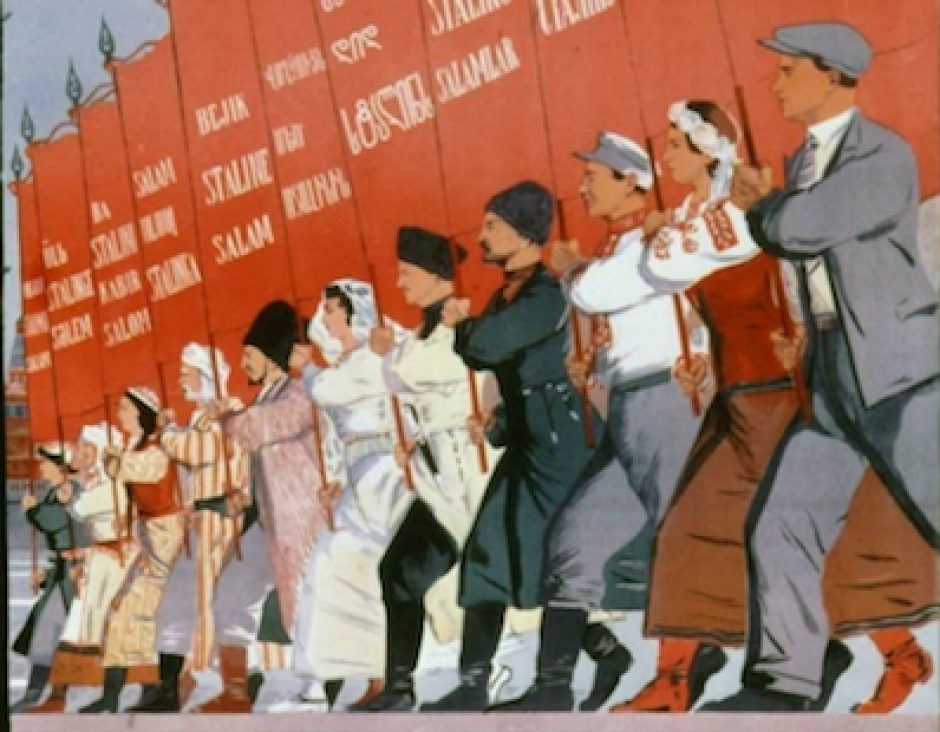As someone who comes into this class with a limited background in Russian and Soviet history, this reading gave me a lot to consider about the unique aspects of empire in the region. I was pleasantly surprised how both authors integrated cultural analysis into their theories of empire. Most texts I have encountered on the subject of empire concern themselves largely with political and economic considerations with little regard to the status of culture/s. While Suny and Martin both construct a narrative in their chapters about the tsarist Russia and the USSR, respectively, read together they allow us to track change over time. I was especially fascinated by how they frame constructions of national identity. Suny points out that the tsar and Orthodox church served as a makeshift nationalist force of binding the empire together. (39) But by the period of Martin’s focus, the USSR managed an uneasy balance between the national identities of colonized territories expressed through the titular “affirmative action empire” and an overarching Soviet identity to which they all theoretically owed allegiance. Suny and Martin both do well to lay out the definitional and theoretical foundations of which they write, but I also came away from these readings with several interpretive and content-based questions:
- How does Suny articulate the difference between nation and state?
- Do Suny and Martin construct narratives of history differently?
- How did the tsarist empire negotiate its geographic and cultural location between East and West? How did this later affect the USSR?
- How did the relationship between policy and culture change as the tsarist empire transitioned to the USSR? To what extent were cultures determined by popular sentiment or political mandate?
As a bonus, one of my favorite resources for thinking about colonialism and empire is Nancy Shoemaker’s Typology of Colonialism for the AHA. Though largely described in relation to American empire, I think the definitions she lays out provide interesting ways to think about the different relationships between metropole and periphery.
